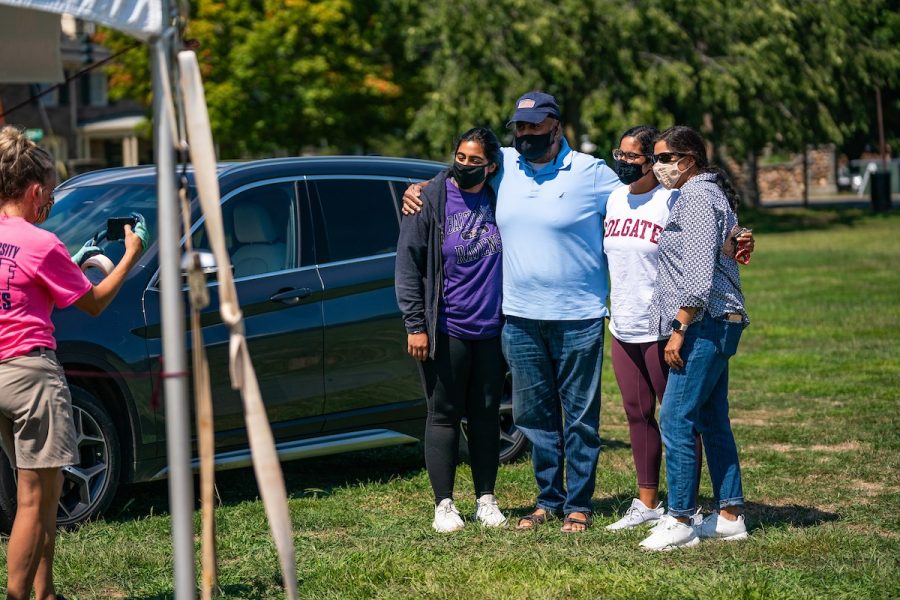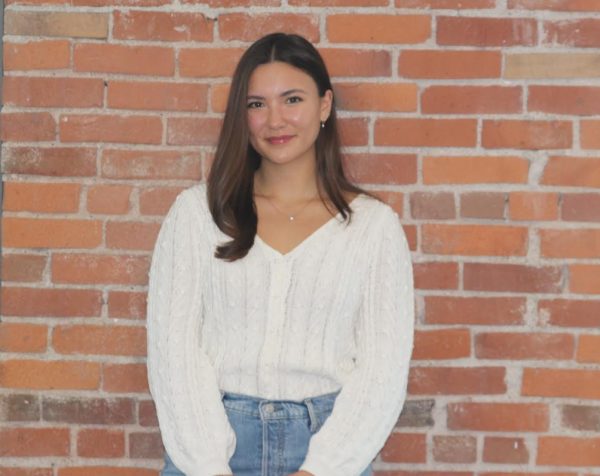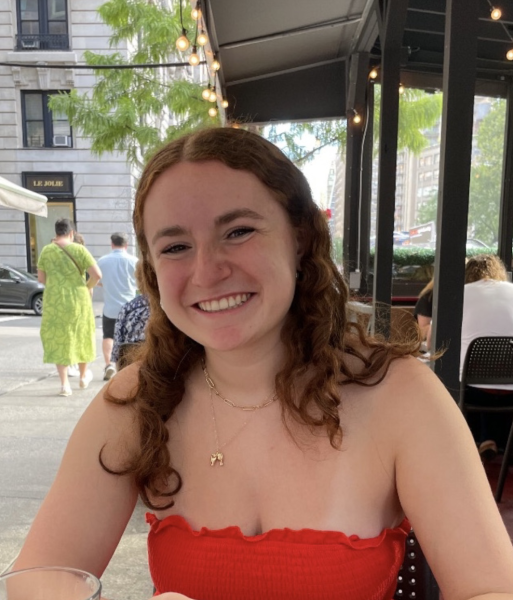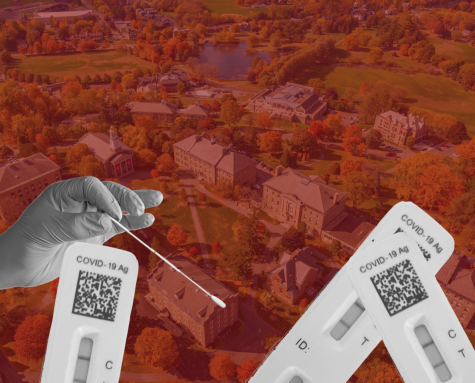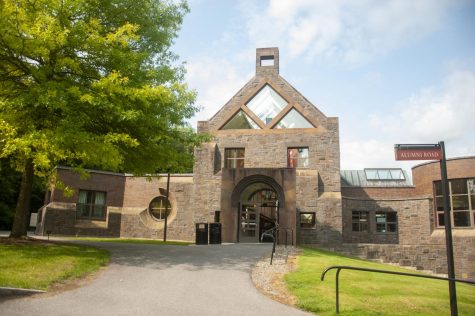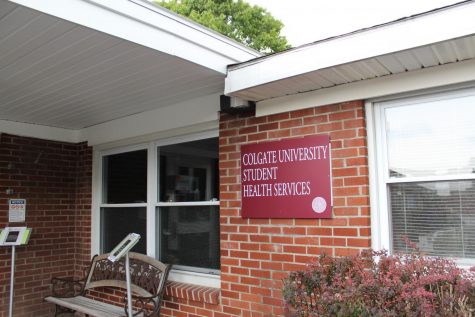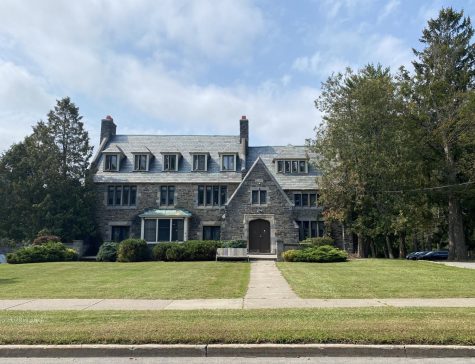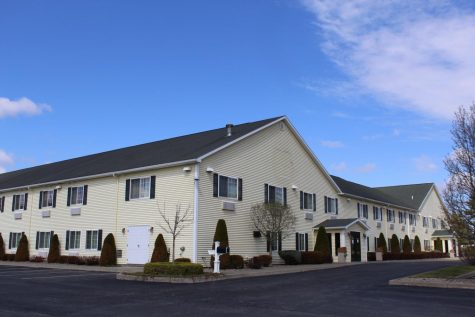Moving in During COVID-19: Family Goodbyes on Whitnall and Two-Hour Arrival Windows Among Colgate’s Procedures
Move-in day looked a little different for Colgate University’s fall 2020 semester; with the COVID-19 pandemic still ongoing in the United States, Colgate made changes to its move-in day procedures to make it safer for students, faculty, staff and the broader Hamilton community.
“The [move-in] process was adjusted with safety of the campus community in mind. There was signage installed to communicate the need for masks and social distancing at the entrances, student volunteers were eliminated from the plan, parents are not allowed to help students move in along with numerous other changes,” Director of Facilities Operations Jason Wallace said.
Among the many changes was the number of students physically attending classes at Colgate, as several of the university’s classes will be offered either with the option to attend in-person, only as an online class, or as a hybrid of the two. The students who choose to return to campus will be required to submit a negative COVID-19 test, read and sign a “Commitment to Community Health” pledge and read through a course designed to teach about what COVID-19 is and how to best prevent its spread. Wallace said the biggest move-in concerns leading up to Aug. 23 were student non-compliance and inclement weather.
Students all chose an arrival day time-slot to prevent large gatherings at check-in and the residence halls, with first-year students choosing a two-hour block between 7:00 a.m. and 4:30 p.m., Aug. 23 and upper-level students choosing a slot between 7:00 a.m. and 4:30 p.m. Aug. 24 and 25. This year’s move-in day was aided by university personnel instead of the typical student volunteers.
“There are literally hundreds of faculty, staff, coaches, that will help everyone move in. Normally, we hire or ask 250 students to help. This year, you will see faculty members, departmental administrative assistants, all the coaches, so it’s going to be us, the whole cabinet, helping you move in,” University President Brian Casey said.
To be as clear as possible with the students and what was expected of them for move-in day, Colgate administrators and staff members sent a series of emails. However, the number of emails became overwhelming for some students, seemingly giving too much information and muddling a process that the university was trying to make transparent and simple.
“I felt like the administration sent us a lot of emails,” Junior Chase Hoyt said. “It seemed like they were trying to be so informative that I was just inundated with information. Some of the emails seemed a little repetitive, so I found myself just skimming, trying to figure out what I’d already read and what was new, and that made it a little confusing because I was essentially just handed too much information.”
As soon as students arrived on campus on move-in day, they were required to check-in with Colgate staff at the Oak Drive and College Street intersection, where university personnel would verify whether or not the student in question submitted a negative COVID-19 test. Those who had not submitted negative results were directed to the Merrill House parking loop where they would receive further information from Student Health Services.
Students moving into regular residential halls (i.e. not a townhouse or apartment) were directed to Whitnall Field, where they and their families wouldunload their cars at a designated tent as moving trucks and university staff would help to transport items to the student’s dorm. After unloading their car, students would say goodbye to their families. Students who are keeping a car at Colgate would then exit through the south end of the field, park at the General Use lot next to Tyler’s Field and walk back to the area between James C. Colgate Hall and Case-Geyer Library to finish registration.
Students who moved into a townhouse, apartment or off-campus housing were directed to park on Lally Lane following a check-in with Colgate staff at the Oak Drive and College Street intersection. Families traveling with the student were expected to stay in the car while the student finished the registration process in the area between James C. Colgate Hall and Case-Geyer Library.
Staff at the registration tent would then verify that the student had completed the “Student Commitment to Community Health” health education training and submitted a negative COVID-19 test result. Students who had not completed the commitment were expected to finish it at that time, while students who hadn’t completed the training wereexpected to do so within 24 hours. Students who had not submitted a negative COVID-19 test were given further instruction by Student Health Services. Students would then register for a COVID-19 test for the following day and would receive their room key along with a welcome bag. After this, students were allowed to return to their cars and finish the process of moving in with the help of Colgate staff and faculty, with families not allowed to enter Colgate residential facilities.
Campus buildings were preemptively equipped with hand sanitizer stations and signs were posted around campus signaling the need for students to wear masks and socially distance at entrances in an effort to reduce the risk of contracting COVID-19.
While administration attempted to simplify the move-in process for students living on-campus as much as possible, the COVID-19 pandemic did not only affect this demographic.
“Campus move in was pretty confusing in terms of when we were supposed to check in or not and how exactly our process was going to work,” Senior Nikhil Rajavasireddy said. “Besides when they sprang on [students living off-campus] not being able to move in until everyone else—even though we had signed leases allowing us to come early—we didn’t really [get any information concerning move-in].”


